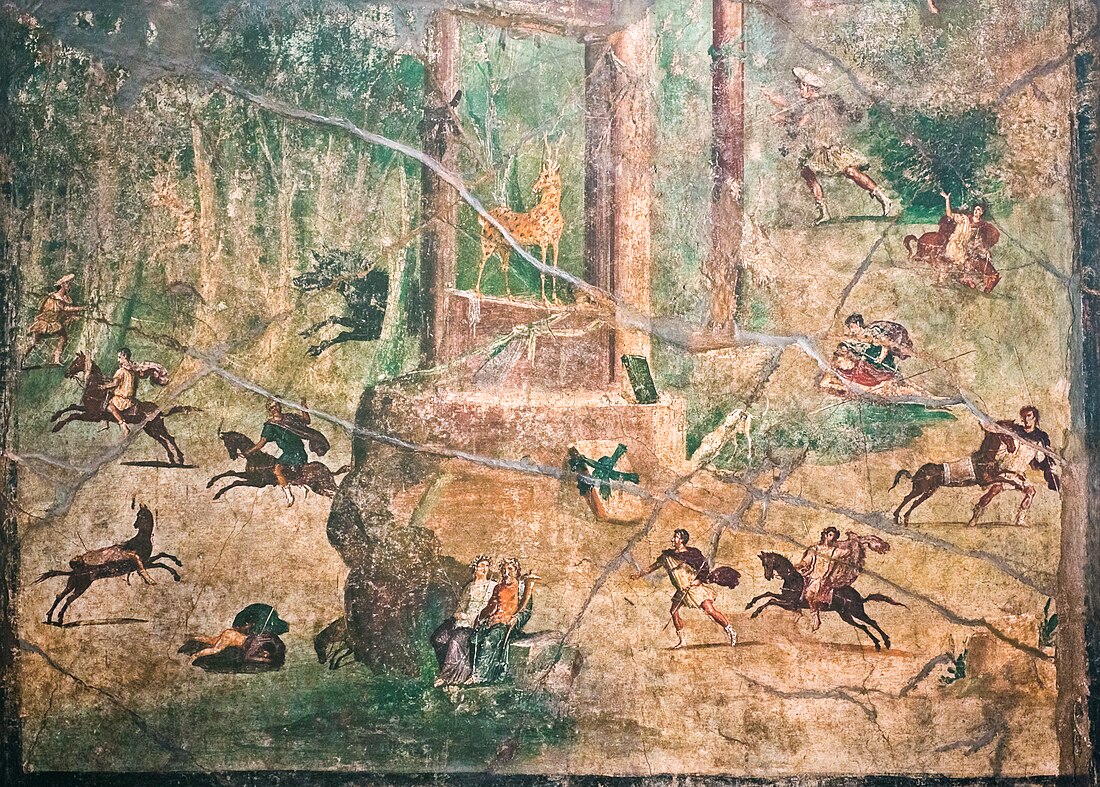Top Qs
Timeline
Chat
Perspective
Amaleus
Male Niobid From Wikipedia, the free encyclopedia
Remove ads
In Greek mythology, Amaleus (Ancient Greek: Ἀμαλεύς, romanized: Amaleús) is the name of the eldest of the Niobids, the twelve or fourteen children of Amphion, king of Thebes, by his wife Queen Niobe.[1] Although the Niobids are primarily notable for the myth of Niobe's blasphemous boast against the goddess Leto, Amaleus has a unique appearance of his own in myth, where an attempt on his life was made by his aunt, Aëdon, wife to his father's brother.[2]
Remove ads
Etymology
The ancient Greek proper name Ἀμαλεύς might be connected to the Greek noun ἀμαλός (amalós), meaning 'soft'.[3][4] A son of Amphion named Homoloeus (Ancient Greek: Ὁμολωεύς, romanized: Homolōeús) appears as an eponym in a scholium on Euripides.[4]
Mythology
Summarize
Perspective
Aëdon
Amaleus had many siblings and only one cousin, Itylus, the son of his uncle Zethus by his wife, Aëdon. All the Niobids but especially Amaleus got along greatly with cousin Itylus; the two boys slept together in the same room and, in some accounts, bed.[5][6] However Aëdon deeply resented Niobe for having borne so many children while she only had one, so she conceived a plan to kill Amaleus, who was the firstborn child.[7][8]
Aëdon carefully instructed Itylus to sleep in the back of the room, or in the innermost position of the bed that night, but Itylus forgot about his mother's orders when night fell.[9][10] So that night when Aëdon crept up into the room wielding a dagger and planning to murder the unsuspecting Amaleus, she ended up killing her own child Itylus instead, not recognising him in the darkness.[11][12][4][13] In another version Aëdon did succeed in killing Amaleus, but immediately took the life of her own son as well, in fear of Niobe's reaction.[5][10]
Niobe's boast
In the most known myth concerning the Niobids, Amaleus' mother Niobe was exceedingly proud of the vast progeny she had produced for her husband. In a tale that goes as far back as the Iliad, she hubristically boasted of being a greater mother than the goddess Leto herself, for she had many children (usually twelve or fourteen, equally divided between sons and daughters),[14] while Leto only had two.[15] Leto did not let the insult go, so she informed her two children, the archer gods Artemis and Apollo, and they took matters in their own hands; with their bows and arrows they slew all the Niobids one by one to avenge their mother's honour.[16]
It was said that the boys, whom Apollo slew, were killed while they were hunting in the woods. Their father, Amphion, committed suicide in grief at the sight of the lifeless bodies of his sons, or was slain by Apollo while storming his temple in protest.[17][18] Niobe herself would be transformed into rock following the slaying of the daughters.[19] In some versions of the tale, a single child, Meliboea (thereafter renamed Chloris) was spared, or two children, one of each sex, Chloris and her brother Amyclas.[20][21] In a rarer version, Niobe's father, named Assaon instead, fell in love with Niobe, but she would not yield to his incestuous embraces, so he invited all her children to a banquet and burnt them all to death in revenge.[22]
Remove ads
Analysis
Those two narratives have a lot in common beyond being connected to Niobe. In both, a woman with few children (a boy and a girl even) is threatened by Niobe and her vast progeny and thus becomes her rival, whose method of revenge is to bring harm to one or more Niobids. Leto being a goddess however means she is successful in punishing Niobe, while Aëdon, who is a mortal, fails and her efforts result in tragedy.[23]
See also
Other instances of a mother (nearly) dooming her children:
- Cassiopeia
- Telephus and Auge
- Itys
References
Bibliography
External links
Wikiwand - on
Seamless Wikipedia browsing. On steroids.
Remove ads

